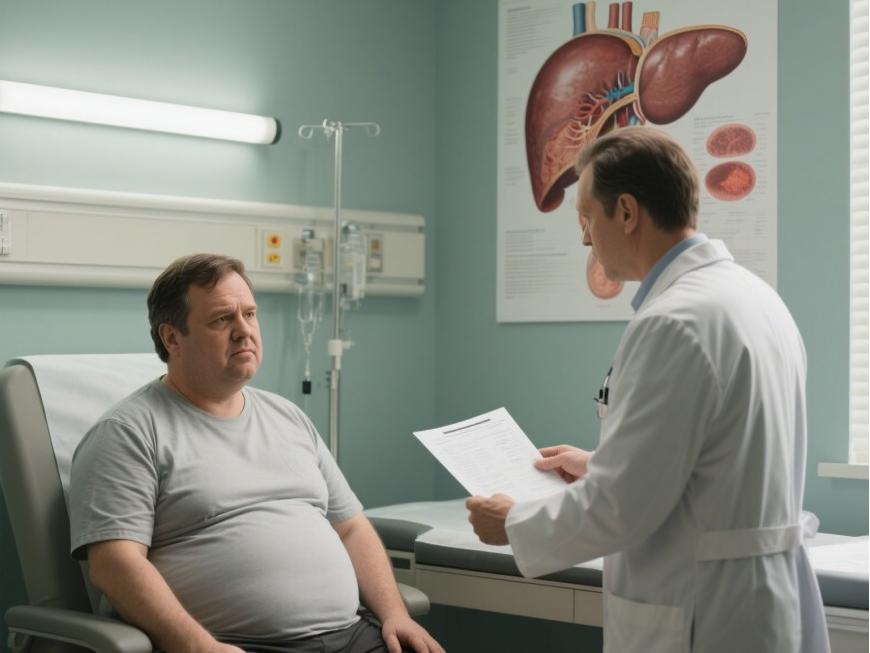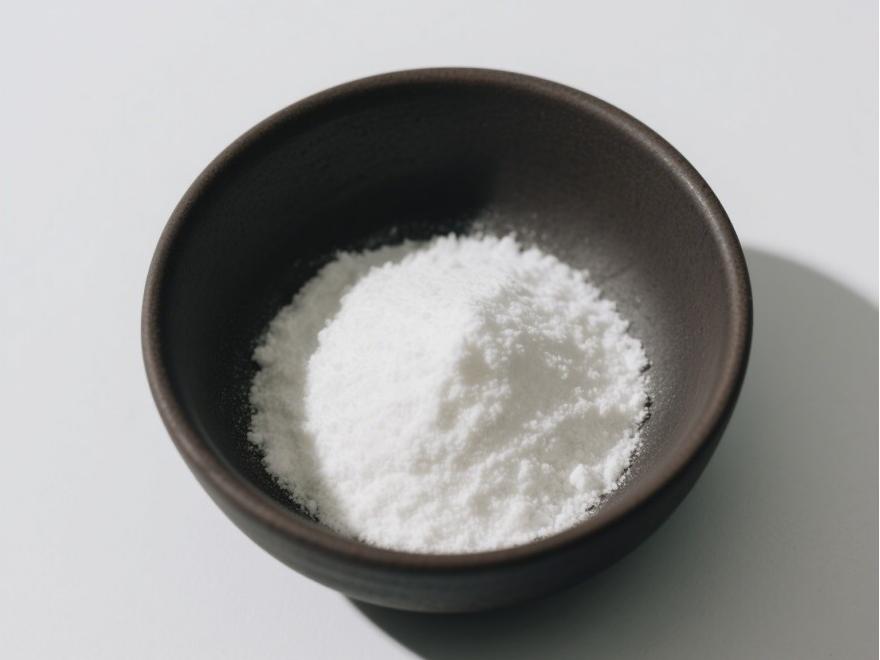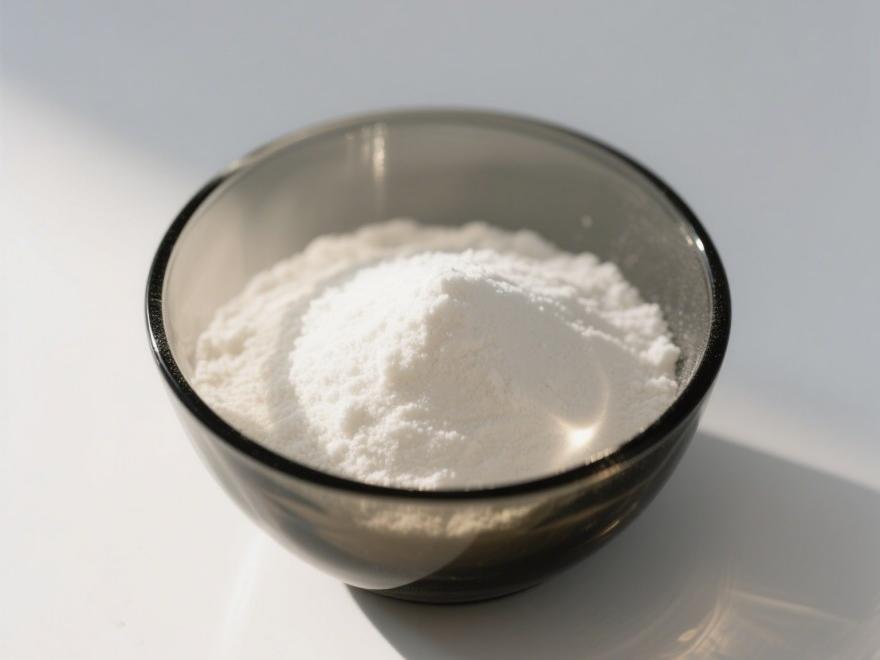What Are the Clinical Uses of Medium Chain Triglycerides?
Medium-cha에서 중성지방 수치s (MCT) refer to saturated fatty 산s with carb에 cha에서 lengths 의 8–12, primarily found naturally 에서 coconut 기름, with very low levels 에서 other natural foods. They have a caloric value 의 34.73 kJ (8.3 kcal) per gram.
1 Metabolic characteristics 의 MCT
나는ngested MCT is broken down by lipases 에서 the stomach 그리고 duodenum 에서to glycerol 그리고 medium-cha에서 fatty 산 (M-CFA), which have good water solubility. In the small intestine, they can be absorbed without bile emulsification, 그리고 their hydrolysis rate is six times that 의 long-chain 중성지방 수치s (LCT) [1]. They are then absorbed in the small intestinal mucosal epithelial cells in the form of glycerol 그리고 MCTs, directly entering the portal vein via small intestinal capillaries, and rapidly transported to the liver.
MCTs have different effects on the gastrointestinal tract compared to LCTs. They have a weaker inhibitory effect on gastric emptying (duodenum-gastric feedback inhibition) [2], but a stronger stimulatory effect on cholecystokinin release [3], and the same stimulatory effect on pancreatic secretion as LCTs [4].
M CFA undergoes oxidation, metabolism, and conversion in the liver at the same rate as 포도당 [5], with oxidation occurring within mitochondria. Unlike LCT, M CFA does not rely on carnitine as a carrier when crossing the mitochondrial membrane, resulting in faster oxidation rates than LCT. MCT is more likely to produce ketone bodies (ketone bodies) 동안 metabolism in the body than LCT.
MCTs ingested in the diet have three metabolic pathways in the body: ① Oxidative decomposition: Approximately 50% of dietary MCTs are oxidized [6], with the primary forms of M CFA oxidative decomposition being β-oxidation, Ω-oxidation, Ω-2 oxidation, and Ω-1 hydroxylation, ultimately excreted in urine in various forms such as 3-, 6-, and 7-hydroxyoctanoic acid [7]. Previous studies have used the detection of dicarboxylic 산 in urine to evaluate MCT oxidation, but it is currently believed that dicarboxylic acids in urine are not exclusively derived 에서 MCT oxidation [8]; ② Storage in the body in the form of fat; ③ Conversion into long-chain fatty acids: Using the 13C labeling method to trace the metabolic pathways of M CFA, it was found that myristic acid (14:0) and palmitic acid (16:0) were formed [6], and Carnielli et al. also suggested that the conversion of MCT to LCT is an important pathway [9].
2 Effects of MCT on energy and major nutrient metabolism
MCT does not easily induce appetite, has a lower energy density than LCT, and is less likely to be deposited in adipose tissue [10]. Experimental studies have shown that replacing part of LCT with MCT (30%–60%) in the diet does not easily cause weight gain in healthy males [11]; 24-hour energy metabolism measurements demonstrated that MCT (15–30 g/day) can increase energy expenditure by up to 5%; simultaneously, urinary levels of adrenaline and dopamine increased, suggesting that this effect is related to MCT stimulation of sympathetic nervous system excitation [12]. On the other hand, since it can stimulate insulin secretion, promote anabolic metabolism, increase fatty acid 합성, and lead to hyper중성지방 수치mia (TG), it does not support the role of MCT in weight 제어 [10].
The effects of MCT on 단백질 metabolism remain inconclusive. Some experiments suggest that under identical feeding conditions, MCT is more effective than LCT in increasing protein retention and protein utilization in chickens, while also exhibiting a strong weight-gain effect [13]; however, another study in chicks indicated that feed containing MCT reduced energy utilization and protein retention in chickens, though protein utilization remained unchanged [14].
Studies on MCT diets for non-insulin-dependent diabetes mellitus (NIDDM) have not yet determined their effects on glucose metabolism. Some studies suggest that MCT increases insulin-mediated glucose metabolism [15]; however, another study on NIDDM patients indicated that a diabetic diet supplemented with MCT had minimal effects on blood glucose control and did not increase insulin-mediated glucose metabolism [16].

The effects of MCT on lipid metabolism are complex. MCT increases plasma total cholesterol (TC) and low-density lipoprotein cholesterol (LDL-C) to a degree comparable to palmitic acid (16:0) and significantly 높은er than oleic acid (16:1) [17]. A study in rats showed that MCT increases 간 triglyceride synthesis more strongly than n-3 polyunsaturated fatty acids, which is an important factor influencing plasma TG concentrations [18]. In another 6-day oral MCT intake experiment, TG increased by 42%, and high-density lipoprotein (HDL) decreased by 15% [19]. However, many studies suggest that MCT may have beneficial effects on lipid metabolism.
MCT can alleviate type I hyperlipidemia caused by lipoprotein lipase deficiency. In a case report, a low-fat, low-energy diet (585.76 kJ/day, 10 g fat/day) was ineffective, but adding 30 g of MCT daily reduced the patient's TG from 10 g/L to 2.5 g/L. The possible mechanism is that MCTs regulate lipoproteins rich in triglycerides, increasing TG clearance [20]. Rats fed MCTs showed greater increases in body protein content compared to those fed LCTs, while MCTs rarely entered the liver or adipose tissue [21].
3 Clinical application studies of MCT
The ketogenic effect of MCT has been widely recognized and applied. Ketogenic diets formulated with MCT are helpful in improving drug resistance in epilepsy treatment; inducing a ketogenic state in tumor patients with MCT can inhibit tumor glucose metabolism and growth while maintaining the patient's nutritional status [22].
Since MCTs ingested via the intestine do not form chylomicrons and are transported via the lymphatic system, they have been attempted as a lipid source for patients with lymphatic fistulas to reduce fat loss and prevent malnutrition. The incidence of chylous fistula after neck surgery is approximately 1–2.5%. In cases where this complication occurs, MCT can be used to formulate enteral nutrition formulations to reduce the leakage of chylous fluid. In approximately 50% of cases, this approach has shown good efficacy, thereby avoiding the need for parenteral nutrition (PN)[23]. Chylous ascites and chylous pleural effusion are common complications following complex abdominal surgery. Conservative treatment with MCT-based diets should be the first choice, with PN considered if ineffective. Surgical repair may be performed if conservative treatment fails [24,25]. Additionally, reports indicate that a low-fat MCT-containing diet was successfully used in two patients with primary lymphangiectasia [26]; in a premature infant with congenital hypothyroidism and chylothorax, MCT formula milk replaced breast milk and achieved good therapeutic effects [27].
MCT can also be used to treat patients with fat malabsorption. A controlled trial in AIDS patients with fat malabsorption and diarrhea demonstrated that MCT significantly reduced fecal fat content, bowel movement frequency, and weight. Additionally, it was proven that the therapeutic effect of MCT on diarrhea is independent of the underlying cause, being effective for both aseptic and infectious diarrhea [28]. In patients with pancreatic insufficiency and steatorrhea, replacing part of LCT with MCT without adding pancreatic enzymes can improve symptoms of malabsorption [29].

MCT is also used in sports nutrition. As an energy source, MCT synergistically supplies energy with carbohydrates, prolonging energy release and effectively maintaining energy requirements 동안 prolonged exercise in athletes [30]. In an 8-week pre-competition preparation for a world-class bodybuilder, replacing 25% of the normal fat content with MCT resulted in a reduction in body fat from 9% to 7%, similar to the effect of a traditional low-fat diet containing only 5% LCT [31]. When MCT and LCT are consumed together (in a 30:70 ratio), there is no difference in carbohydrate utilization or glycogen breakdown, but free fatty acids and plasma ketone bodies increase [32]. A 7-week feeding study in rats with MCT, LCT, and carbohydrate control diets showed that MCT increased intestinal sucrase activity by reducing the degradation of the sucrose-isomaltase complex [33].
Studies on MCT inevitably involve dosage issues. Depending on the experimental objectives, the dosage of MCT varies widely. For example, when used for ketogenic purposes, the dosage is relatively high, accounting for 50% to 70% of total calories. In studies exploring other applications of MCT, different methods are used to quantify dosage, including the percentage of MCT in total calories, the percentage of MCT in fat calories, and the weight ratio of MCT to carbohydrates. The percentage of MCT in total calories can reach up to 40% [11]; the percentage of MCT in fat calories should not exceed 90%, with common ratios ranging from 50% to 70%, as using MCT as the sole fat source can lead to essential fatty acid deficiencies. The ratio of MCT to carbohydrates (by weight) can vary widely. In animal experiments, MCT doses are typically designed based on the percentage of MCT in the total feed weight, generally ranging from 10% to 30%.

MCT administration methods are diverse, including oral administration, enteral feeding, and use in parenteral nutrition (PN). Currently, in PN applications, fat emulsions containing MCT are transitioning from physical mixing of MCT and long-chain triglycerides (LCT) to chemical mixing, with chemically mixed fat emulsions referred to as structured fat emulsions.
참조
[1]Johnson RC,Cotter R.M etabolism of medium-chain triglyceride lipide mulsion[J].Nutrition Intert national,1986,2:150.
[2]Becker s EJ,Jeukendrup AE,Brouns F,et al.Gastric emptying of carbohydrate-medium chain triglyceride suspensions at rest[J].Int J Sports M ed,1992,13(8):581-584.
[3]M abayo RT,Furuse M,Yang SI,et al.M edium-chain triacylglycerols enhance release of cholecystokinin in chicks[J].J Nut r,1992,122(8):1702-1705.
[4]Caliari S,Benini L,Sembenini C,et al.M edium-chain triglyceride absorption in patients w ith pancreatic insufficiency[J].Scand J Gastroenterol,1996,31(1):90-94.
[5]Berning JR.The role of medium-chair triglycerides in exercise [J].Int J Sport But r,1996,6(2):121-133.
[6]Carnielli VP,Sulkers EJ,M oretti C,et al.Conversion of octanoic acid into long-chain saturated fatty acids in premature infants fed a formula containing medium-chain triglycerides [J].M etabolism,1994,43(10):1287-1292.
[7]Costa CC,Dorland L,Kroon M,et al.3-,6and 7-hydroxyoctanoic acids are metabolites of medium-chain triglycerides and excreted in urine as glucuronides[J].J M ass Spectrom,1996, 31(6):633-638.
[8]T serng KY,Griffin RL,Kerr DS.Distinction of dicarboxylic aciduria due to medium-chain triglyceride feeding from that due to abnormal fatty acid oxidation and fasting in children [J].M etabolism,1996,45(2):162-167.
[9]Carnielli VP,Sulkers EJ,M oretti C,et al.Conversion of octanoic acid into long-chain saturated fatty acids in premature infants fed a formula containing medium-chain triglycerides [J].M etabolism,1994,43(10):1287-1292.
[10]Bach AC,Ingenbleek Y,Frey A.The usefulness of dietary medium-chain triglycerides in body w eight control:fact or fancy[J]? J Lipid Res,1996,37(4):708-726.
[11]Stubbs RJ,Harbron CG.Covert manipulation of the ratio of mediumto long-chain triglycerides in isoenergetically dense diets:effect on food intake in ad libitum feeding men[J].Int J Obes Relat M et ab Disord,1996,20(5):435-444.
[12]Dulloo AG,Fathi M,M ensi N,et al.T w enty-four-hour energy expenditure and urinary catecholamines of humans consum ing low-to-moderate amounts of medium-chain triglycerides:a dose-response study in a human respiratory chamber [J].Eur J Clin Nut r,1996,50(3):152-158.
[13]M abayo RT,Furuse M,Kita K,et al.Improvement of dietary protein utilisation in chicks by medium chain triglyceride[J]. Br Poult Sci,1993,34(1):121-130.
[14]Furuse M,M abayo RT,Kita K,et al.Effect of dietary medium chain triglyceride on protein and energy utilisation in grow ing chicks[J].Br Poult Sci,1992,33(1):49-57.
[15]Eckel RH,Hanson AS,Chen AY,et al.Dietary substitution of medium-chain triglycerides 개선 insulin-mediated gluco se metabolism in NIDDM subjects[J].Diabetes,1992,41 (5):641-647.
[16]Yost TJ,Erskine JM,Gregg TS,et al.Dietary substitution of medium chain triglycerides in subjects w ith non-insulin-dependent diabetes mellitus in an ambulatory setting:impact on glycemic control and insulin-mediated glucose metabolism[J].J Am Coll Nut r,1994,13(6):615-622.
[17]Cater NB,Heller HJ,Denke MA.Comparison of the effects of medium-cahin triacylglycerols,palm oil,and high oleic acid sunflow er oil on plasma triacylglycerol fatty acids and lipid and lipoprotein concentrations in humans[J].Am J Clin N utr,1997,65(1):41-45.
[18]Geelen MJ,Schoots WJ,Bijleveld C,et al.Dietary medium-chain fatty acids raise and( n-3)polyunsaturated fatty acids low er hepatic triacylglycerol synthesis in rats[J].J Nutr, 1995,125(10):2449-2456.
[19]Sw ift LL,Hill JO,Peters JC,et al.Plasma lipids and lipoproteins during 6 d of maintenance feeding w ith long-chain, medium-chain,and mixed-chain triglycerides[J].Am J Clin Nut r,1992,56(5):881-886.
[20] Shirai K,Kobayashi J,Inadera H,et al.Type I hyperlipoproteinemia caused by lipoprotein lipase defect in lipid-interface recognition w as relieved by administration of mediumchain triglyceride[J].M etabolism,1992,41(11):1161-1164.
[21]Hw ang SG,Yano H,Kaw ashima R.The influence of dietary medium and long chain triglycerides on grow th performances and fat deposition in grow ing rats[J].J Nutr Sci Vitaminol ( T okyo),1992,38(2):127-139.
[22]Nebeling LC,Lerner E.Implementing a ketogenic diet based on medium-chain triglyceride oil in pediatric patients w ith cancer[J].J Am Diet Assoc,1995,95(6):693-697.
[23]de Gier HH,Balm AJ,Bruning PF,et al.Systematic approach to the treatment of chylous leakage after neck dissection[J]. Head Neck,1996,18(4):347-351.
[24]Panieri E,K ussman BD,Michell WL,et al.Chylous ascites follow ing abdominal aortic surgery[J].S Afr J Surg,1995,33(1):26-28.
[25]M uns G,Rennard SI,Floreani AA.Combined occurrence ofchyloperitoneum and chylothorax after retroperitoneal surgery[J].Eur Respir J,1995,8(1):185-187.
[26]Andersen UM,Lund HT.Primary intestinal lymphangiect asis[J].U geskr Laeger,1996,158(13):1840-1841.
[27]Yamamoto T,Koeda T,T amura A.Congenital chylothorax in a patient w ith 21 trisomy syndrome[J].Act a Paediatr Jpn, 1996,38(6):689-691.
[28]Wanke CA,Pleskow D,Degirolam i PC,et al.A medium chain triglyceride-based diet in patients w ith HIV and chronic diarrhea reduces diarrhea and malabsorption:a prospective,controlled trial[J].Nutrition,1996,12(11-12):766-771.
[29]Caliari S,Benini L,Sembenini C,et al.M edium-chain triglyceride absorption in patients w ith pancreatic insufficiency[J].Scand J Gastroenterol,1996,31(1):90-94.
[30] Jeukendrup AE,Saris WH,Schrauw en P, et al.M etabolic availability of medium-chain triglycerides coingested w ith carbohydrates during prolonged exercise[J].J Appl Phy siol, 1995,79(3):756-762.
[31]M anore M M,Thompson J,Russo M.Diet and exercise st rategies of a w orld-class bodybuilder[J].Int J Sport Nut r,1993, 3(1):76-86.
[32]Jeukendrup AE,Saris WH,Brouns F,et al.Effects of carbohydrate( CHO)and fet supplement ation on CHO metabolism during prolonged exercise[J].M etabolism,1996,45(7):915921.
[33]Shinohara H,Goda T,T akase S,et al.Feeding medium-chain triglyceridees to rats decreases degradation of sucrase-isomalt ase complex in the jejunum[J].J Nutr,1993,123(6):11611167.


 영어
영어 프랑스
프랑스 스페인
스페인 러시아
러시아 한국
한국 일본
일본





